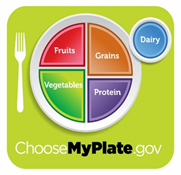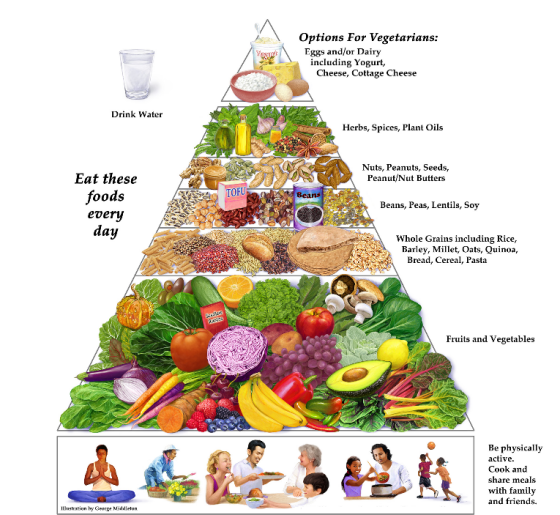-
- About ASB Main Page
- Deployment Travel and Travel Readiness
- Frequently Asked Questions
- Government Travel Charge Card
- Household Goods Officers
- Important Regulation Changes
- Junior COSTEP Travel Information
- Links
- Official Travel Forms
- Permanent Change of Station (PCS)
- Servicemembers Civil Relief Act (SCRA)
- Table of Frequently Used Acronyms
- Temporary Duty Assignments (TDY)
- Transportation
- Travel and Transportation
- Travel and Transportation Allowances FAQ
- Travel and Transportation Entitlements Summary
- Travel, PCS and Transportation
- Important Regulation Changes
- Travel & Transportation Entitlements Summary
- Permanent Change of Station (PCS)
- Temporary Duty (TDY)
- Junior COSTEP Travel Information
- Official Travel Forms
- Household Goods Officers
- Transportation
- Government Travel Charge Card
- Table of Frequently Used Acronyms
- Servicemembers Civil Relief Act
- Links
- Travel and Transportation Allowances FAQ
- Personnel & Career Management
- Officer Support
- DEERS Information
- Education Benefits
- FAQ
- Licenses and Transcripts
- Licensure Overview and FAQs
- Transcripts FAQs
- Leave
- eCORPS Information
- Officer Leave and Absence Request FAQ
- Practice Hours
- Practice Hours FAQs
- Practice Hours User Guide
- Practice Hours Opportunities
- Long Term Training
- Extramural and Intramural Training FAQs
- Training Forms
- About Policy
- Commissioned Corps Issuance System
- Commissioned Corps Legislative Liaison Program (CCLLP)
- Equal Opportunity
- Frequently Asked Questions
- Political Restrictions
- Promotion Ceremony Protocol (PDF, 126kb)
- SGHG Drill and Ceremonies Manual (PDF, 3.39mb)
- Uniform Specifications
- PHS Hard Shoulder Boards and Sleeve Insignia (Male and Female) (PDF, 828kb)
- PHS Soft Shoulder Marks (Unisex) (PDF, 324kb)
- Physical Training Uniform (PTU)
- Promotion Preparation
- Checklist (Due Dates & Reminders)
- Precepts & Benchmarks
- Administrative Checks
- General Guidance
- Promotion Process
- Eligibility
- Opt Out/Promotion Deferral
- Zones
- Below the Zone
- Failure of Promotion
- Scoresheets
- Deployment Information
- Operations and Deployment
- On-Call Schedule
- Deployment Awards
- Other Resources
- About the Training Branch
- Training Dates
- Career Pathways
- Webinars
- Career Development Trainings
- Officer Basic Course (OBC)
- Officer Intermediate Course (OIC)
- Preparedness Trainings
- Military Facility Annual Training (MFAT)
- Partner Trainings
- Army War College (AWC)
- Interagency Institute for Federal Health Care Executes (IAI)
- Capstone Leadership, Education, Analysis, Development, Sustainment (LEADS)/Joint Medical Executive Skills Institute (JMESI) Course
- Command and General Staff Officer Course (CGSOC)
- Defense Advanced Research Project Agency (DARPA)
- Joint Medical Executive Skills Institute (JMESI) Intermediate Executive Skills (IES)
- Office of National Drug Control (ONDCP)
The USPHS Commissioned Corps is committed to our mission to protect, promote, and advance the health and safety of the nation. Public Health Service officers are trained and equipped to provide crucial public health leadership, assist with policy development, advance innovation and science, provide essential care services and respond to national and global public health emergencies. Through our Active Duty Regular Corps, our Public Health Response Strike Team (PHERST) and our Ready Reserve Corps, we remain responsive and available to rapidly deploy in the service of health.
-
Commissioned Corps Bulletin July 8, 2015
Fit for Duty, Fit for Life: 2015 Dietary Guidelines Advisory Report Review
Contributed by: LCDR Kibbe Conti, MS, RDN, CDE
Our mission, to Protect, Promote and Advance the Health and Safety of the United States, calls for us to not only help others, but also to individually maintain and model good health. A healthy diet is a pillar of well-being throughout the lifespan. Sound tools and resources, like the Dietary Guidelines for Americans and the Physical Activity Guidelines for Americans, can guide us in assisting individuals and groups in achieving healthy diet and physical activity patterns.
Although the 2015 Dietary Guidelines for Americans have not yet been published, the advisory committee1 appointed by the U.S. Department of Health and Human Services and the U.S. Department of Agriculture, released a scientific report in February. This report will serve as the foundation of the 2015 guidelines. The evolving science of nutrition continues to guide us in new and healthier directions.
Eat Less Sugar
The report recommends that 10 percent or less of a person's daily diet comes from added sugars. For a person who consumes 2,000 calories per day that intake translates to less than 30 grams or two tablespoons of added sugars. The vast majority of the U.S. population exceeds the recommended intake, according to the report. There is strong evidence of a link between added sugars and cardiovascular disease, Type 2 diabetes & obesity.2
Nutrient Shortcomings
A majority of the U.S. population have low intakes of key food groups: vegetables, fruits, whole grains, and dairy. These food groups are important sources of the nutrients, vitamins A, D, E, and C, folate, calcium, magnesium, fiber, and potassium. The committee also found that consumption of refined grains, solid fats, sodium and added sugars is too high. Iron also is a shortfall nutrient for adolescent and pre-menopausal females.
What’s New in Nutrition?
- According to the report, a moderate amount of seafood is an important component of a healthy diet, and has demonstrated health benefits whether it is farm-raised or wild caught seafood.
- Limits on dietary cholesterol might be outdated based on a lack of correlation of consumption of cholesterol with blood cholesterol levels.
- Strong evidence shows that consumption of coffee within the moderate range (3 to 5 cups per day or up to 400 mg/d caffeine) causes no increased health risks among healthy individuals, and may have some health benefits for adults.
More than One Way to a Healthful Diet
Below are three examples of dietary patterns identified that show nutritional adequacy. These are the Healthy U.S.-style Pattern, Healthy Mediterranean-style Pattern, and the Healthy Vegetarian Pattern. Individual socio-cultural preferences and medical needs should also be considered.
This sound advice is yet another reason to fill our plates with fruits, vegetables, whole grains, beans, nuts and olive oil. Backed by research and closely aligned with recommendations from other groups, including the American Heart Association and the American Institute for Cancer Research, these dietary patterns will support well-being throughout the lifespan.

Healthy U.S.-Style Pattern
- Emphasizes a variety of fruits, vegetables, and grains at least half of which are whole grains;
- Low-fat milk and dairy products;
- Includes lean meats, poultry, fish, beans, eggs, and nuts;
- Is low in saturated fats, trans fats, cholesterol, salt (sodium), and limits added sugars to less than 10% of calories.
 www.oldwayspt.org © Oldways Preservation & Trust
www.oldwayspt.org © Oldways Preservation & Trust
Healthy Vegetarian Pattern
- Protein sources for vegetarians include eggs (for ovo-vegetarians), beans and peas, nuts, nut butters, and soy products (tofu, tempeh, veggie burgers).
- Nutrients that vegetarians may need to focus on include protein, iron, calcium, zinc, and vitamin B12.
- Build meals around protein sources that are naturally low in fat, such as beans, lentils, and rice. Try to avoid overloading meals with high-fat cheeses to replace meat.
 www.oldwayspt.org © Oldways Preservation & Trust
www.oldwayspt.org © Oldways Preservation & Trust
Healthy Mediterranean-Style Pattern
- Grains, vegetables, and fruits should be eaten at most meals, as they are sources of vitamins, minerals, energy, antioxidants, and fiber.
- Olives and olive oil are central to the Mediterranean diet, used for cooking, baking, and for dressing salads.
- Fish and shellfish are sources of healthy protein for Mediterranean populations. Fish such as tuna, herring, sardines & salmon are rich in essential heart-healthy omega-3 fats.
- Nuts, beans, legumes and seeds are good sources of healthy fats, protein & fiber.
Sources:
1http://health.gov/dietaryguidelines/2015-scientific-report/
2http://health.gov/dietaryguidelines/2015-scientific-report/06-chapter-1/ -
COMMISSIONED CORPS NEWS
Officer Spotlight September 2025
Officer Spotlight
Practice Hours Opportunities
Practice Hours Opportunities
2023 Temporary Grade Promotions
CC News Announcement 2023 Temporary Grade Promotions
Changes in Tattoo Policy in CCI 412.01, Uniforms and Appearance
Changes in Tattoo Policy in CCI 412.01, Uniforms and Appearance
Surgeon General Priorities
Surgeon General Priorities
January 2021: United States Public Health Commissioned Corps Doctrine
The link above will take you to the Noncompetitive Promotion Roster for Promotion Year 2020.
FAQs Practice Hours and Special Pay Changes
This is first in a series of FAQs, more FAQs will be forthcoming on Practice Hours and Special Pays.
Coronavirus Disease 2019 (COVID-19) Mission - Deployments Readiness Updates
As we position ourselves to assist with controlling the spread of the Coronavirus Disease 2019 (COVID-19), please note that we’re in an “all-hands on deck” status. Messaging has gone out from the Assistant Secretary for Health reminding Commissioned Corps officers of their deployment responsibilities...
Previous Bulletins Available Online
Protecting, Promoting and Advancing the Health and Safety of Our Nation. Commissioned Corps Headquarters
1101 Wootton Parkway, Suite 300
Rockville, MD. 20852
240-453-6000-
COMMISSIONED CORPS- Home
- Contact Us
- About Us
- Site Map
-
U.S. DEPARTMENT OF
HEALTH AND HUMAN SERVICES- HHS Home
- Office of Assistant Secretary for Health
- Office of the Surgeon General
- USPHS.gov
-
U.S. GOVERNMENT- The White House
- USA.gov
- USAJOBS.gov
- DATA.gov
-
ADDITIONAL INFORMATION- Plain Writing Act
- Accessibility
- Privacy Notice
- Freedom of Information Act
- Disclaimers
- Vulnerability Disclosure Policy

-
COMMISSIONED CORPS OF THE
U.S. PUBLIC HEALTH SERVICE® - CCMIS

 Earlier articles
Earlier articles